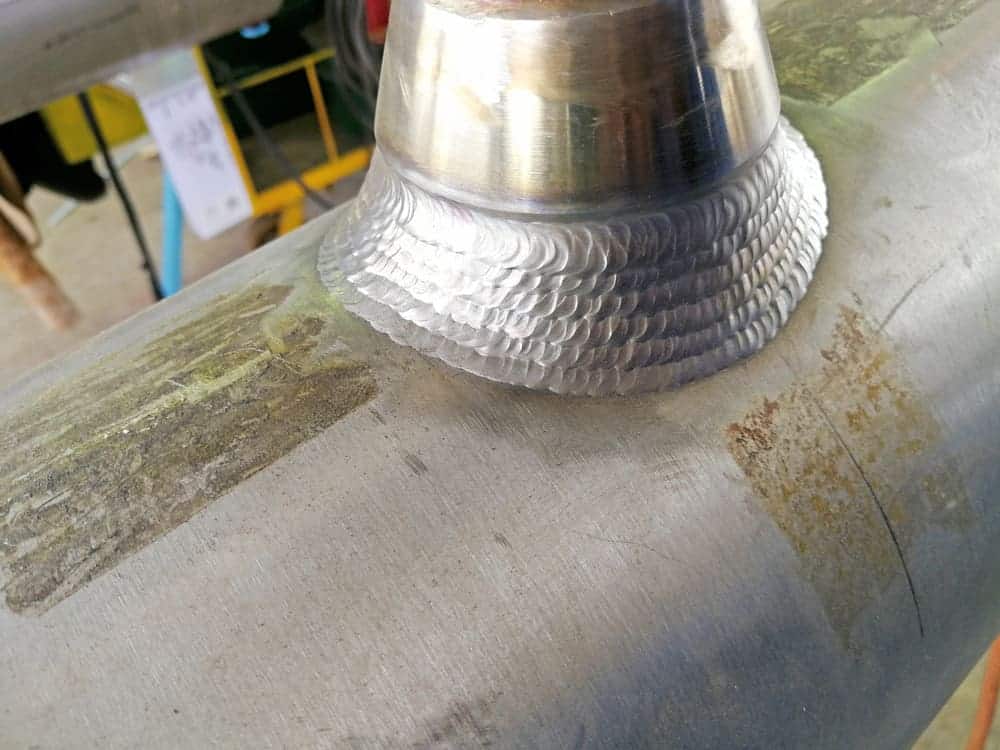
Nickel has long been a part of human history, and engineers have certainly made use of it in a wide range of industrial applications. For example, nickel and its alloys are used as part of turbines in aircraft or steam generators, medical devices, and fluid system components in the oil and gas industry. The metal is usually preferred, in itself or as an alloying element, for its properties that include:
- Corrosion and oxidation resistance
- High-temperature resistance
- High mechanical strength
- Electrical resistance
When alloyed with different metals, nickel forms a unique class of metal with its own set of properties. The change in conventional metallic properties also requires a different approach to welding nickel alloys. Let us discuss the various classes of nickel alloys and the options available for welding them.
The Different Types of Nickel Alloys
Nickel is a versatile metal offering alloying compatibility with a wide range of metals. In combination with iron, copper, chromium, and other metals, the resulting alloys can be produced with excellent strength, toughness, and ductility characteristics suitable for use in corrosive or extreme temperature environments. Furthermore, nickels can be classified into distinct types when alloyed.
Nickel-Iron Alloys (FeNi)
When alloyed with iron, nickel forms a nickel-iron alloy. With varied compositions, these alloys provide good toughness, low thermal expansion, moderate strength, and a range of magnetic properties. Invar is a common nickel-iron superalloy that exhibits controlled expansion and magnetic properties across various temperature ranges.
In combination with other alloying elements, such as chromium or cobalt, nickel-iron alloy also produces metals like Inconel and stainless steel, which have their own unique properties.
| Stainless steel (304 grade) | 8-10% Ni 18-20% Cr Balance FeTensile strength– 500-750 MPaMelting point– 1450 CExcellent corrosion resistance |
| Inconel (625 grade) | 58-71% Ni, 20-23% Cr, 5% Fe, 1% CoTensile strength– 700-1100 MPaMelting point– 1300 CHigh corrosion resistance |
| Invar 36 | 36% Ni, 64%FeTensile strength– 445 MPaMelting point– 1687 CModerate degree of corrosion resistance |
Nickel-Copper Alloys (CuNi)
Also known as cupronickel, this nickel alloy’s primary base metal is copper. The CuNi alloy forms a face-centered cubic structure, making the alloy ductile for easy fabrication. The cupronickel usually has a composition of 70-90% copper and 10-30% nickel, with the occasional addition of metals like manganese, where additional corrosion resistance may be required.
This alloy is most suitable in marine environments as part of a piping system or heat exchanger unit where resistance against seawater corrosion may be the primary requirement. A notable example of CuNi alloy is Monel, with almost 60-70% nickel and 20-30% copper composition.
In addition, nickel can combine with other metals to form the following range of alloys–
| Nichrome– Nickel-Chromium alloy | Highly resistant to corrosion at a wide temperature range |
| Nitinol– Nickel-Titanium alloy | Can regain its original structure once deformed and reheated |
| Nickel-Molybdenum alloy | Resistant to reducing media |
| Nickel-Cobalt alloy | Excellent strength, corrosion resistance, and wear resistance. |
Welding Nickel Alloys
It is well understood that the different classes of nickel alloys possess varying properties due to their composition and metallurgical structures. They also display different weldability, which means a unique welding approach may be required for each alloy.
Arc welding processes like GTAW are commonly adapted across industries, although GMAW, SMAW, and FCAW may also be used for specific applications. For example, SAW can be applied when welding simple solid solution nickel alloys of 6.5mm thickness or higher.
GTAW is the primary process for welding nickel alloys and is especially useful when a clean and precise result is required. While most precipitation-hardened nickel alloys only use GTAW and do not require any heat treatment, it is better for solid solution nickel alloys to use GTAW once annealed. Concerns for welders working with nickel alloys are defects that include:
- Porosity
- Stress corrosion cracking
- Hydrogen embrittlement
- Slag and impurities
- Microfissures
GTAW can help manufacturers avoid these issues and enable the following benefits:
- Heat input control to minimize stress in the heat-affected zone
- Shielding gas such as argon to prevent external inclusions and enhance purity
- Uniform and consistent weld beads
For nickel alloy, these advantages of GTAW make it possible to maintain important specifications such as the interpass temperature, which should not exceed 350°F, and maintain the standards as specified under:
- ASTM B751; General Requirements for Nickel and Nickel Alloy Welded Tube
- ASTM B775; General Requirements for Nickel and Nickel Alloy Welded Pipe
- ASTM B829; General Requirements for Nickel and Nickel Alloys Seamless Pipe and Tube
- ASTM B906; General Requirements for Flat-Rolled Nickel and Nickel Alloys Plate, Sheet, and Strip
Orbital GTAW Is Ideal for Welding Nickel Alloy
Techniques like SMAW are used when automated welding is not possible due to complex structural or flexibility requirements. But whenever possible, orbital GTAW is the right choice for high-quality nickel alloy welding. The benefits orbital GTAW provides include:
- Automated weld parameter control
- Controlled gas flow rate
- Consistency in weld head movement
- Remote monitoring of the weld puddle
Along with high-quality welding of nickel alloy, industries can also ensure productivity and efficiency with orbital GTAW.
Arc Machines, Inc. is a leading provider of orbital welding solutions with decades of expertise in welding nickel alloys with high quality and precision. For inquiries regarding products, contact sales@arcmachines.com. For service inquiries, contact service@arcmachines.com. Arc Machines welcomes the opportunity to discuss your specific needs. Contact us to arrange a meeting.




